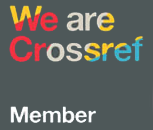The Bulletin of the Institute of Economics of the Russian Academy of Sciences № 3/2024. Finance.
Alexander A. Lomonosov
PhD student of the Faculty of Economics at Lomonosov Moscow State University, Moscow, Russia
PROSPECTS FOR AN ACTIVE INVESTMENT STRATEGY USING THE EXAMPLE OF HEDGE FUNDS
 104-135 104-135 |
 592.8 KB 592.8 KB |
Abstract
The article describes the current status of the hedge fund segment and their investment strategies using the analysis of financial statements, business models and the index method, when a group of hedge funds adhering to the same strategy are combined into an index. CAPM modeling, OLS and calculation of efficiency coefficients (including the Sharpe coefficient) were used. The results of the assessment allowed us to conclude that the most impactful in modern conditions is the global macro strategy of hedge funds investment. To evaluate future profitability within the framework of a given strategy, a model of dependence on market indices was developed.
Keywords: hedge funds, investment strategies, econometric modeling.
JEL: G15, G23
EDN: ZCXFCA
DOI: https://doi.org/10.52180/2073-6487_ 2024_3_104_135
References
- Zdorovenin V.V. Hedge funds: investment activity and assessment of its effectiveness / V.V. Zdorovenin; State University, Higher School of Economics. Moscow: Higher School of Economics, 2009 (Lyubertsy (Moscow region): VINITI PEAK). ISBN 978-5-7598-0644-8. (In Russ.).
- Paramonova V.E. Strategies of event hedge funds in binary events // International Scientific Research Journal. 2017. No. 09 (63). Рart 1. (In Russ.).
- Smirnov F.A. The influence of hedge funds on the transformation of world economic relations // The world of new economy. 2016. No. 1. Pp. 49–54. (In Russ.)
- Ackermann C., McNealy R., Ravenscraft D. The Performance of Hedge Funds: Risk, Return, and Incentives // The Journal of Finance. 1999. No. 54. Рp. 833–874. https://doi.org/10.1111/0022-1082.00129
- Baffes J. Placing the 2006/08 Commodity Price Boom into Perspective / J. Baffes, T. Haniotis // World Bank, 2010.
- Brown S.J., Goetzmann W.N., Sungil Park J.M. (2001) Careers and Survival: Competition and Risk in the Hedge Fund and CTA Industry // The Journal of Finance. 2001. No. 56. Рp. 1869–1886.
- Ichiro Tange, PhD. «Multivariate Time-Series Analysis of Hedge Fund Indices», Cass Business School. City University London, 2014.
- Jagannathan R., Malakhov A., Novikov D. (2010). Do Hot Hands Existamong Hedge Fund Managers? An Empirical Evaluation // Journal of Finance. No. 65. Рp. 217–255.
- Lagi M. The Food Crises: A Quantitative Model of Food Prices Including Speculators and Ethanol Conversion. / M. Lagi, Y. Bar-Yam, K.Z. Bertrand. London.: New England Complex Systems Institute. 21 September, 2011.
- Malkiel B.G. A Random Walk Down Wall Street: The Time-Tested Strategy for Successful Investing. 9th ed. New York: W.W Norton and Company, 2007.
- Onyeka Uche Ofili. International School of Management, The Validity of Active Investment Fund Management, 2014.
Manuscript submission date: 17.05.2024
For citation:
Lomonosov A.A. Prospects for an Active Investment Strategy Using the Example of Hedge Fund // Vestnik Instituta Ekonomiki Rossiyskoy Akademii Nauk. 2024. № 3. Pp. 104-135. (In Russ.). https://doi.org/10.52180/2073-6487_ 2024_3_104_135 EDN: ZCXFCA








